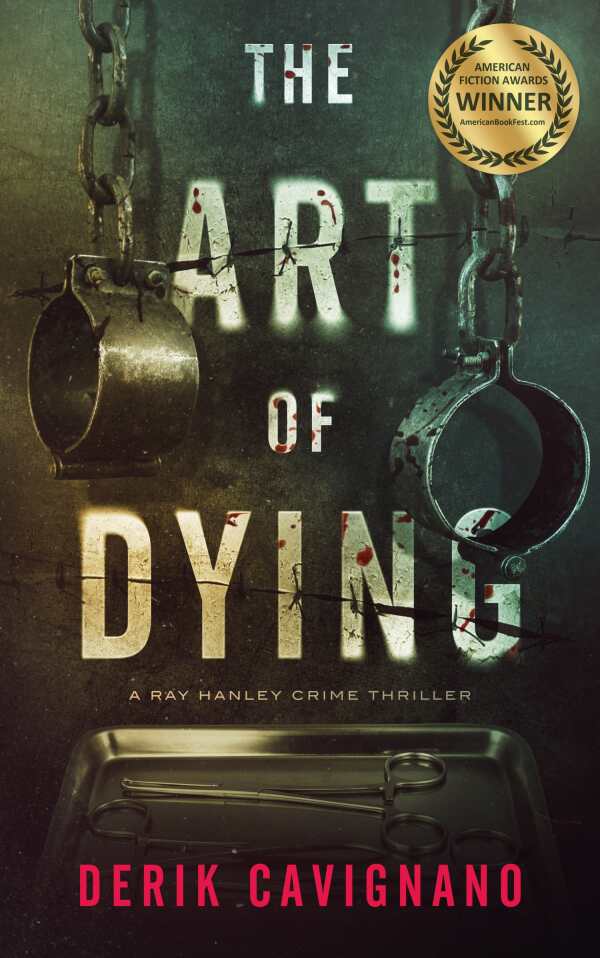The Art of Dying
A Ray Hanley Crime Thriller
The Art of Dying blends drama and horror for a disturbing and gripping thriller.
In Derik Cavignano’s thrilling crime drama The Art of Dying, a determined detective looks for an arrogant and cruel killer while dealing with gang wars and trouble within his own family.
Detective Ray Hanley has seen a lot of death, but nothing quite as gruesome as a series of bodies found with bizarre mutilations. A new serial killer, calling himself The Artist, turns people into terrifying creatures, keeping them alive through their torture and then displaying their dead bodies in high-traffic areas. While Ray tracks down leads to find The Artist, the local crime families dissolve their truce, wreaking havoc on the streets of Boston. If Ray can keep the kingpins from tearing the city and his family apart, he may be able to save The Artist’s remaining masterpieces from an agonizing death.
The writing style is accessible yet creative, using clear and illustrative language. The novel brings the streets of South Boston to life with compelling descriptions of settings including historic parks and gritty back-alley bars. Even fast-paced street chases are easy to understand because they incorporate real road names and landmarks, providing a map of the city.
Psychological connections are rendered thanks to mood-inducing imagery; Ray’s home is filled with the sound of his laughing children, while the dingy subway tunnels remind him of his father’s death. The Artist’s “studio” is described with elaborate and captivating concepts, reinforcing his psychosis and increasing empathy for his victims.
Ray is a hard-working detective with a strong moral compass. He’s not immune to temptation and troublemaking, however—aspects of his character that create a flawed and multidimensional person. His relationships with his wife, brother, and partner are also imperfect, handled with a dark sense of humor that comes across in his dialogue.
Much of the story is told from Ray’s perspective, and pages are filled with his inner monologues, both addressing his emotional foibles and highlighting his analytical mind. His personal issues speak to themes of loyalty and devotion to his cause. The perspective sometimes switches to The Artist and his work, though near the middle of the novel his account vanishes. The Artist is ignored for several chapters that focus on one of the mob leaders.
Other characters fall into tropes. There are misogynistic and jaded cops; tough-as-nails, well-connected mob bosses; an overconfident serial killer with delusions of grandeur. Despite these stereotypes, layers of personality emerge through characters’ distinctive body language and quick-witted banter; even The Artist gives the cops a lead with his specific online writing style.
Most supporting characters play roles specific to the plot, though a handful slip through the cracks. One character who is important in the beginning disappears by the end, and an unlikely hero emerges from The Artist’s victims, adding excitement and tension.
Balanced between Ray’s family life, the mob bosses, and the killer’s actions, the story moves at a consistent pace. The mob and the Artist’s narratives intersect in an unpredictable way, resulting in exhilarating action, but the book’s ending is rushed and leaves some characters’ fates unknown.
The Art of Dying blends drama and horror for a disturbing and gripping thriller.
Reviewed by
Delia Stanley
Disclosure: This article is not an endorsement, but a review. The publisher of this book provided free copies of the book and paid a small fee to have their book reviewed by a professional reviewer. Foreword Reviews and Clarion Reviews make no guarantee that the publisher will receive a positive review. Foreword Magazine, Inc. is disclosing this in accordance with the Federal Trade Commission’s 16 CFR, Part 255.

